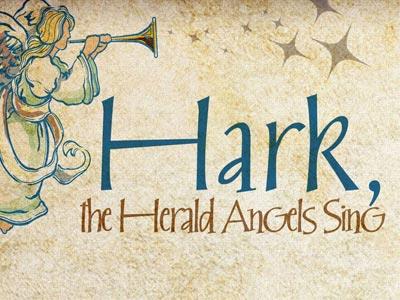-
John's Portrait Of Christ
Contributed by Ed Wood on Nov 28, 2017 (message contributor)
Summary: A message about the coming Messiah from John’s perspective.
JOHN’S PORTRAIT OF CHRIST
Luke 1:14-66; John 1:1-29
INTRO:
ILLUS: One of the most impressive things about the Mormon tabernacle is its wonderful acoustics. It’s reported that a pin dropped in the front can be heard in the back, without amplification.
The 400 years between the O.T. and the N.T. were filled with silence. No prophet spoke and no inspired singer sang. For 400 years, the word of God fell silent.
“At last, a pin dropped. It was only the birth of a baby, a child who grew up to be a man of the wilderness, a new prophet through whom God spoke again.” This prophet’s name was John.
I. JOHN’S MANDATE TO PREPARE THE WAY FOR THE MESSIAH.
In Verse 6, John the Baptist’s mandate to declare the coming of the Messiah is embodied in the word sent. The Greek word translated sent is “apostello” (ᾀðïóôåëëὸ). We get our English word apostle from it and it means “to be sent with authority.” John was sent; he did not come on his own.
John’s mandate was revealed at his birth. Luke 1 tells us that Zechariah was John’s father and Elizabeth was his mother. Luke 1:14-16 tell us how God spoke to Zechariah concerning John’s birth. Zechariah asked the angel for a sign that the promise would come true. The sign was that the old priest would not be able to speak until the child was born and named.
On the eighth day after John’s birth, the family brought him to be circumcised. Neighbors and friends asked what to name the child. Elizabeth said the child’s name would be John. The friends were surprised because no one in the family had ever been named John. Normally, male children were named after their father.
The friends made signs asking Zechariah what to name the child. He asked for a writing tablet and wrote “John.” Suddenly Zechariah could speak again. News of this amazing event traveled fast (Luke 1:66).
John’s mandate is revealed in his witness to the Messiah. John 1 states that he (John) came as a witness to testify concerning that Light. “That Light” refers to Jesus. John was not the light. He was the forerunner, a witness to the Light.
John told the people that the One who was coming after him was before him (v. 30). John 1:1 states, “In the beginning was the word.” Christ had no beginning, no starting point, for He always was.
II. JOHN’S PORTRAYAL OF THE MESSIAH AS JUDGE.
John called the people of Israel to repentance with a warning of God’s judgment. He warned the Pharisees and Sadducees that they must repent or suffer God’s judgment, which the Messiah had come to execute. Christ was a coming Savior, but He also was a coming judge. He was the ax laid to the roots of worthless trees, the winnowing fork that would separate the grain from the chaff, a burning fire that would destroy the worthless chaff—the unrepentant, ritual-minded Sadducees and legalistic Pharisees (Matthew 3:5-12).
III. JOHN’S PORTRAYAL OF THE MESSIAH AS SAVIOR.
John 1:29 tells us that John saw Jesus and said, “Look, the Lamb of God, who takes away the sin of the world!” (NIV). Throughout the O.T., the forgiveness of sin had been mediated through the animal sacrificial system. On the Day of Atonement the high priest entered the holy of holies and offered the blood of a lamb without spot or blemish as a sacrifice for the people’s sins. This act prefigured the Messiah, who would offer Himself for the sins of all people.
CONC: John had fulfilled his tasks of presenting Jesus to the world and of preparing the way for the Savior.

 Sermon Central
Sermon Central



